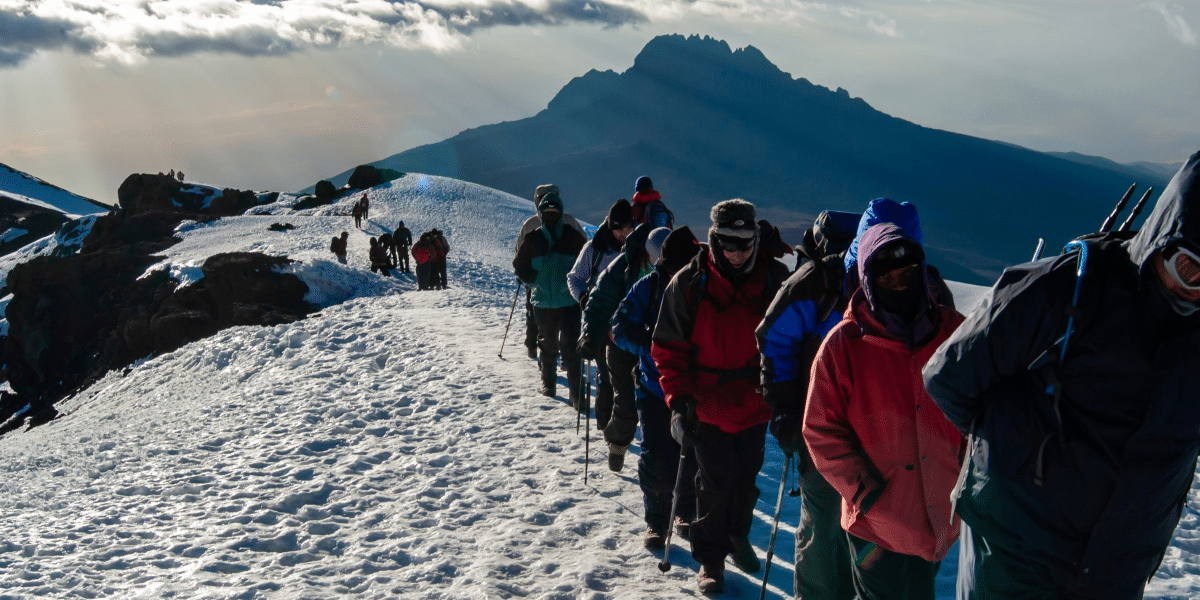Climbing Kilimanjaro in Kilimanjaro National Park is an adventure that many people dream of, but it requires careful planning and preparation. To ensure a safe and successful climb, it is essential to seek expert advice. Here are some valuable tips from the climbing experts at Climbing Kilimanjaro:
Start preparing Well in Advance
To fully prepare for your Kilimanjaro climb, it is recommended to start at least six months in advance. This will allow you enough time to improve your physical fitness and gather all the necessary gear. Additionally, you can consider adding a few days of safari in Tanzania to help you adjust to the new environment before the climb.
Focus on Physical fitness
Hiking Kilimanjaro is a strenuous activity, and being physically fit is crucial for your success. Begin a regular exercise routine that includes cardio and strength training to build endurance and stamina. It takes an average of five to nine days to reach the summit of Mount Kilimanjaro, so the fitter you are, the more likely you are to successfully reach the top.
Invest in the Right Gear
Equipping yourself with the right gear is essential for ensuring safety and comfort during a climbing expedition. It’s important to start with high-quality hiking boots that provide good ankle support and grip, tailored to the terrain you’ll be tackling. Warm layers are necessary too, as temperatures can vary dramatically, especially at higher elevations. Adding a waterproof jacket to your gear will protect you from unexpected rain and wind, keeping you dry and warm. A well-fitted backpack is another crucial item; it should comfortably hold all your essentials without straining your back. Besides clothing and equipment, adequate hydration and nutrition are vital. Carry plenty of water—more than you think you’ll need—to prevent dehydration. Also, pack enough snacks, preferably high-energy options like nuts, granola bars, and fruit, to maintain your energy levels throughout the climb. These preparations will help ensure a more enjoyable and successful climbing experience.
Proper Acclimatization is Key
Altitude sickness is a significant health risk when climbing Mount Kilimanjaro, and without appropriate management, it can lead to severe, potentially fatal consequences. The primary cause of altitude sickness is ascending too quickly to high elevations, which doesn’t allow the body enough time to acclimatize to decreased oxygen levels. To mitigate this risk, climbing experts strongly recommend adopting a slow and steady approach to the ascent. This method helps in gradually adjusting the body’s response to the lower oxygen levels found at higher altitudes. Moreover, it is crucial to incorporate rest days into the climbing itinerary. These rest days are not merely for physical recovery but also play a vital role in helping the body acclimate to the altitude changes. During these days, activities such as light walks or gentle hikes are beneficial as they promote acclimatization without overly exerting the body. By following these strategies, climbers can significantly reduce their risk of experiencing severe altitude sickness, thereby enhancing their chances of a successful and safe summit of Kilimanjaro.
Choose a Reputable Tour Operator
The choice of Kilimanjaro tour operator is crucial in determining both the success and safety of your climb. Selecting a reputable and experienced operator requires diligent research and scrutiny of past client reviews. This process is essential to gauge the reliability and service quality of the operator. Companies like Climbing Kilimanjaro, known for their expertise in organizing climbs, are often highlighted as exemplary choices. Such operators provide valuable guidance through every step of the journey, facilitated by highly experienced guides who are familiar with the mountain’s diverse routes and potential hazards. Additionally, a well-considered and strategically planned itinerary is essential. A good operator will ensure the schedule includes appropriate acclimatization periods, which are vital for a safe ascent. They also manage logistics seamlessly, from transportation to meals and accommodation, enhancing the overall climbing experience. By choosing a reliable tour operator, climbers significantly boost their chances of a successful and enjoyable expedition.
Consider a Longer Route
The longer the climb, the better your chances of summiting successfully. Choosing a longer route like the Northern circuit route allows for better acclimatization and increases your chances of reaching the summit.
To sum it up, climbing Kilimanjaro is a challenging feat that requires proper preparation and advice from experts. By starting early, focusing on physical fitness, having the right gear, acclimatizing properly, and choosing a reputable Kilimanjaro tour operator and a longer route, you can make your Kilimanjaro climb a memorable and successful experience.
Published by: Holy Minoza



















